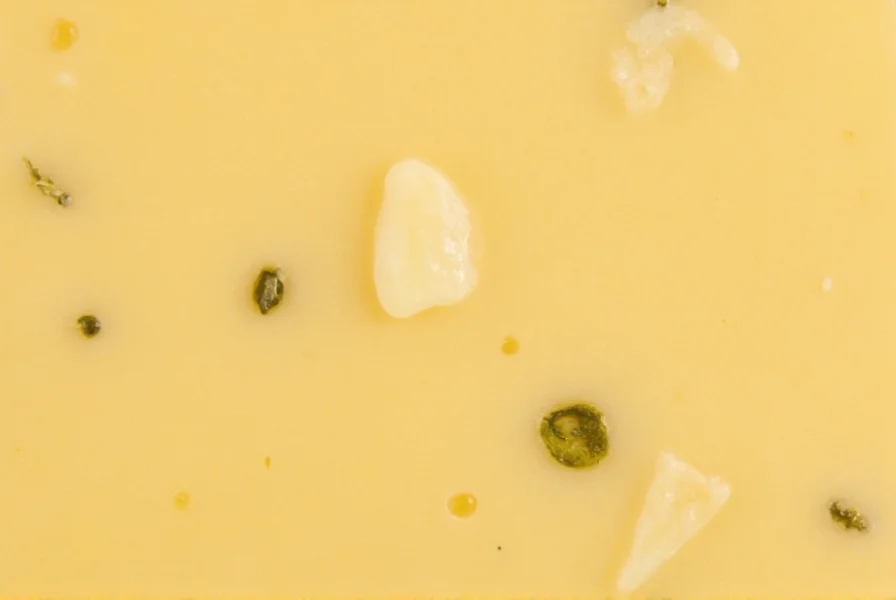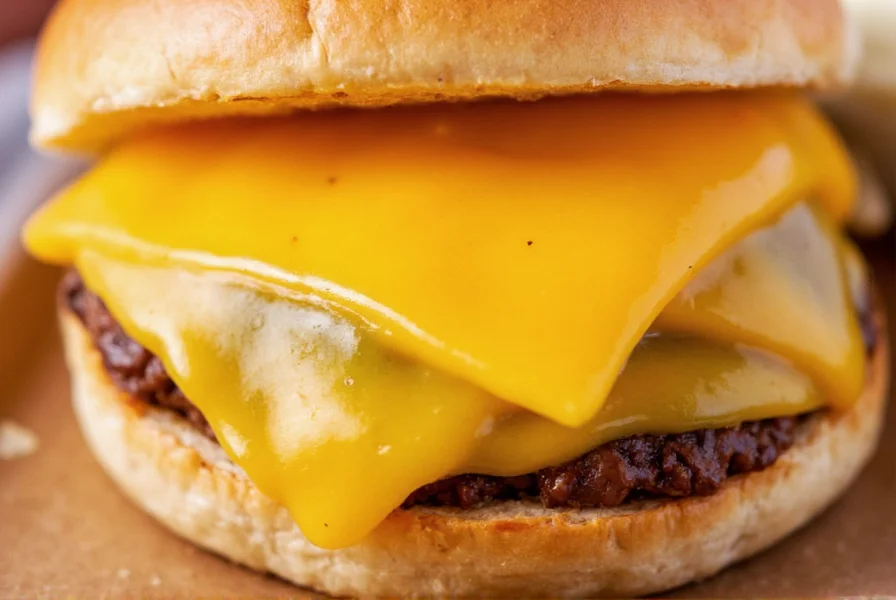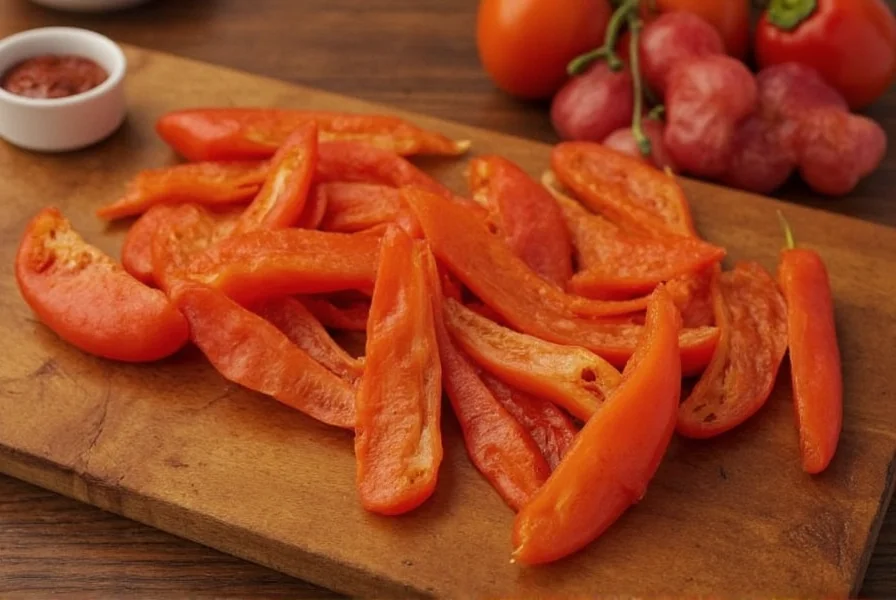Understanding what is pepper jack cheese requires examining its origins, characteristics, and culinary applications. This popular cheese variety has become a staple in American kitchens and restaurants, particularly in Southwestern and Mexican-inspired cuisine. Unlike many specialty cheeses with centuries of history, pepper jack is a relatively modern creation that emerged in the late 20th century as American palates began embracing spicier flavors.
History and Development of Pepper Jack Cheese
While Monterey Jack cheese dates back to Mexican Franciscan friars in California during the 18th century, pepper jack is a contemporary adaptation. Food manufacturers began experimenting with adding peppers to traditional Monterey Jack in the 1970s and 1980s to create a more flavorful product that appealed to evolving American tastes. The addition of peppers transformed the mild, buttery Monterey Jack into a cheese with distinctive visual appeal and a gentle kick that doesn't overwhelm the palate.
Characteristics of Pepper Jack Cheese
When exploring what does pepper jack cheese taste like, several distinctive characteristics define this cheese variety:
| Characteristic | Description |
|---|---|
| Taste Profile | Creamy, buttery base with mild to medium heat from peppers; flavor intensifies as it ages |
| Texture | Semi-soft, smooth, and slightly springy; excellent melting properties |
| Appearance | Pale yellow base with visible flecks of red and green peppers |
| Pepper Varieties | Typically contains jalapeños, but may include serranos, habaneros, or bell peppers |
How Pepper Jack Is Made
The cheese-making process for what is pepper jack cheese made of follows traditional methods with a spicy twist:
- Start with pasteurized cow's milk and bacterial cultures
- Add rennet to coagulate the milk into curds
- Cut and cook the curds to release whey
- Drain and press the curds into molds
- Brine the cheese for preservation and flavor development
- Add finely diced peppers during the curd stage
- Age for 1-3 months (sometimes longer for sharper varieties)
The timing of pepper addition affects the final product's appearance and flavor distribution. Cheesemakers who add peppers early in the process create cheese with more evenly distributed heat, while those who add them later produce pockets of more intense spiciness.
Pepper Jack vs. Monterey Jack: Key Differences
Many people wonder about pepper jack cheese vs monterey jack when selecting cheese for recipes. The primary differences include:
- Flavor: Monterey Jack is mild, buttery, and slightly sweet, while pepper jack adds spicy notes from peppers
- Appearance: Monterey Jack is uniform pale yellow, whereas pepper jack shows visible pepper flecks
- Heat Level: Monterey Jack has no heat, while pepper jack ranges from mild to medium spiciness
- Culinary Uses: Monterey Jack works well where subtle cheese flavor is desired, while pepper jack adds flavor complexity
Despite these differences, both cheeses share similar melting properties and nutritional profiles, making them somewhat interchangeable depending on whether you want to add heat to your dish.
Is Pepper Jack Cheese Spicy?
A common question is is pepper jack cheese spicy enough to affect sensitive palates. The answer depends on several factors:
- Most commercial pepper jack contains mild heat that won't overwhelm most eaters
- Heat level varies by brand and specific peppers used (jalapeño-based is milder than habanero)
- Aging process can mellow the spiciness over time
- Pepper distribution affects perceived heat (some bites may be spicier than others)
For those sensitive to spice, milder varieties exist, while heat enthusiasts can find artisanal versions with extra peppers or hotter varieties. The cheese's creamy base helps balance the heat, making it more approachable than many spicy foods.

Culinary Applications for Pepper Jack
Understanding how to use pepper jack cheese in recipes unlocks its full potential in the kitchen. This versatile cheese shines in numerous applications:
- Melting applications: Grilled cheese sandwiches, quesadillas, nachos, and cheese sauces
- Burgers and sandwiches: Adds flavor complexity without overwhelming other ingredients
- Appetizers: Stuffed in dates, wrapped in bacon, or cubed for cheese platters
- Cooking: Incorporated into omelets, scrambled eggs, or baked dishes
- Pairings: Complements bold flavors like chorizo, roasted vegetables, and spicy salsas
Chefs appreciate pepper jack's excellent melting properties combined with its flavor profile. When melted, the cheese maintains its distinctive appearance with pepper flecks visible throughout the melted cheese, adding visual interest to dishes.
Nutritional Profile of Pepper Jack
For those curious about pepper jack cheese nutritional facts, here's a standard nutritional breakdown per 1-ounce (28g) serving:
| Nutrient | Amount | % Daily Value* |
|---|---|---|
| Calories | 110 | - |
| Total Fat | 9g | 12% |
| Saturated Fat | 5g | 25% |
| Cholesterol | 25mg | 8% |
| Sodium | 170mg | 7% |
| Protein | 7g | 14% |
| Calcium | 200mg | 15% |
*Percent Daily Values are based on a 2,000 calorie diet. Your daily values may be higher or lower depending on your calorie needs.
Pepper jack provides valuable protein and calcium while containing moderate amounts of fat and sodium. The peppers add minimal nutritional value but contribute antioxidants and capsaicin, which may offer some health benefits.

Storage and Shelf Life
Proper storage extends the freshness of pepper jack. When considering how long does pepper jack cheese last, follow these guidelines:
- Store in the original packaging until opened
- After opening, wrap tightly in wax paper, then place in a resealable plastic bag
- Keep in the vegetable crisper drawer of your refrigerator (34-38°F)
- Unopened: 3-4 weeks past sell-by date
- Opened: 2-3 weeks
- Freezing: Possible for up to 3 months, but texture may change slightly
The peppers in pepper jack can sometimes cause the cheese to dry out faster than plain Monterey Jack, so proper wrapping is essential. If mold appears on the surface, cut away at least 1 inch around and below the mold spot, as long as the rest of the cheese looks and smells normal.
Popular Brands and Selection Tips
When shopping for pepper jack, consider these selection tips to find the best product for your needs:
- Examine the pepper distribution - evenly distributed flecks indicate consistent flavor
- Check the ingredient list for quality - should contain milk, cultures, enzymes, salt, and peppers
- Consider the heat level based on your preference and intended use
- Freshly grated pepper jack often has better flavor than pre-shredded varieties
- Artisanal varieties may offer more complex flavors than mass-produced options
Major brands like Tillamook, Sargento, and Cabot offer reliable pepper jack options, while local cheesemakers often produce distinctive varieties worth exploring for special occasions.
FAQs About Pepper Jack Cheese
What makes pepper jack different from regular jack cheese?
Pepper jack differs from regular Monterey Jack by containing visible pieces of spicy peppers like jalapeños, serranos, or habaneros. This addition creates a cheese with mild to medium heat, distinctive flecked appearance, and more complex flavor profile while maintaining similar texture and melting properties.
How spicy is pepper jack cheese on the heat scale?
Most commercial pepper jack cheese registers between 500-2,500 on the Scoville scale, placing it in the mild to medium heat range. The actual spiciness varies by brand and specific peppers used, but generally won't overwhelm most palates. The creamy cheese base helps balance the heat, making it more approachable than many spicy foods.
Can I substitute pepper jack for Monterey Jack in recipes?
Yes, you can generally substitute pepper jack for Monterey Jack in recipes, but be aware it will add heat and visual flecks of pepper. This substitution works well in dishes where you want to add flavor complexity, such as grilled cheese sandwiches, quesadillas, or casseroles. For recipes where you want pure cheese flavor without heat, stick with regular Monterey Jack.
Does pepper jack cheese melt well for cooking applications?
Yes, pepper jack melts exceptionally well due to its semi-soft texture and moisture content. It's excellent for grilled cheese sandwiches, quesadillas, nacho cheese sauce, and topping burgers. The melting process distributes the peppers throughout the cheese, creating a visually appealing and flavorful result. For best melting results, shred the cheese yourself rather than using pre-shredded varieties.
Is pepper jack cheese gluten-free?
Most traditional pepper jack cheese is naturally gluten-free as it's made from milk, cultures, enzymes, salt, and peppers. However, always check the label as some specialty varieties might include additives that contain gluten. Pre-shredded versions sometimes use anti-caking agents that could contain gluten, so block cheese is generally the safer option for those with gluten sensitivities.











 浙公网安备
33010002000092号
浙公网安备
33010002000092号 浙B2-20120091-4
浙B2-20120091-4